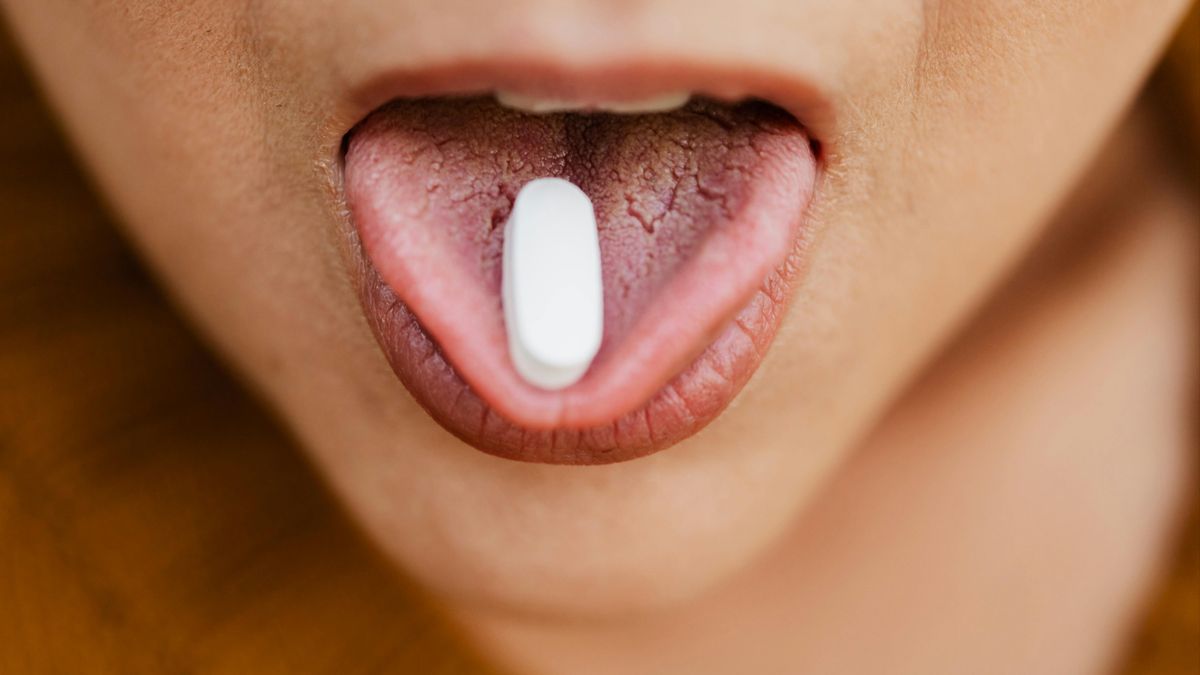Top 10 supplements you can safely take without a lab test

They do exist! These 10 supplements can usually be taken without any problems – no need for blood tests or other diagnostics.
You already understand that it generally makes sense to first check whether you actually have a deficiency before taking a supplement. The “watering can” principle ("I’ll just take whatever my favorite health influencers recommend") may be easy to follow but can go wrong. Because with some micronutrients (and other supplements), too much can do real harm. This mainly applies to fat-soluble vitamins and trace elements. More on that in one of the upcoming articles.
Today’s focus is on the exceptions to the “test first, then take” rule: Not every vital nutrient needs to be tested in the blood beforehand. For some, the benefits are clear even without numbers, the risks are manageable, and deficiency is not unlikely. But don't get me wrong: I don't say everybody has to supplement these compounds – it's a very individual decision and this article hopefully helps you a bit.
And: "just take it" doesn't mean "pour it in blindly". That’s why you’ll find here a nuanced list of ten micronutrients that you can usually start with even without lab results – sometimes with a note on when it might still make sense to take a closer look.
1. Magnesium – the underestimated all-rounder
Why should I consider to supplement?
Magnesium is involved in over 300 enzymatic reactions – from muscle relaxation and energy production to stress regulation. The need increases with sports, stress, caffeine, or medication use (e.g. proton pump inhibitors).
Experts assume a widespread deficiency.
The different forms of magnesium are worth their own article, but with citrate, malate, and bisglycinate, you're very likely making a good choice. The NRV (Nutrient Reference Value – the amount a healthy person should consume daily to prevent deficiency symptoms) for magnesium is 375 mg.
Two notes: To get 375 mg of elemental magnesium, you often need more than 3 grams of the compound depending on the form. And if you exercise or are under stress, your need is probably much higher.
Either way: A supplement with 300 mg per day won’t hurt you.
What happens in case of overdose?
That’s the practical part: too much magnesium usually leads "only" to acute diarrhea – if so, try to switch to Bisglycinate (also see Glycine, below), Malate or Taurate (also see Taurine, below).
And if I want to test anyway?
Labs often measure serum values, but these are not very meaningful since most magnesium is stored inside cells. If you want to know more precisely, invest in a whole blood mineral analysis.
2. Vitamin C – the water-soluble classic
Why should I consider to supplement?
Vitamin C is essential for immune function, skin, connective tissue, and as an antioxidant. The need increases with physical stress, infections, injuries, inflammations – practically all the time.
For few micronutrients are the recommended amounts so widely debated: The NRV is 80 mg daily, while Linus Pauling took up to 18 g daily in old age – spread throughout the day. A daily supplementation of 200 mg up to 500 mg is probably quite reasonable; during acute infections or after injury/surgery, possibly even more.
Important: Do not take together with selenium!
Otherwise, the form doesn’t matter much. “Ester-C” (a buffered form) is often recommended, as it’s apparently better tolerated by sensitive stomachs and seems to keep blood levels elevated longer.
What happens in case of overdose?
High doses (several grams per day) can cause diarrhea and, in sensitive individuals or people with a history of kidney disease, kidney stones.
And if I want to test anyway?
Since the separated plasma must be immediately frozen and protected from light, it’s best to have the blood sample taken directly at the lab.
3. NAC (N-Acetylcysteine) – cell protection and mucus dissolver
Why should I consider to supplement?
NAC boosts the body’s own production of glutathione – one of the most important antioxidants in the body. Especially helpful in cases of oxidative stress, environmental pollution, or (chronic) inflammation.
NAC also acts directly on the lungs, as a classic mucus dissolver and as protection against fine dust and other air pollutants. More.
Usual dosage: 600 mg, once, twice or thrice daily.
What happens in case of overdose?
Very high doses (more than 2–3 g) may cause nausea, vomiting, or diarrhea.
If you have asthma, histamine or sulfur intolerance, you should be cautious. Do not take during pregnancy or breastfeeding.
And if I want to test anyway?
Cysteine is measurable in the blood but rarely tested, even in labs that offer amino acid profiles. Glutathione can be measured as a target structure, but it is relatively expensive.
4. Glycine or Collagen – for joints, sleep, and structure
Why should I consider to supplement?
Glycine is the most common amino acid in connective tissue and has a calming effect on the nervous system. With glycine or in combination with collagen peptides, you support skin, joints, regeneration, and sleep.
You can use glycine as a mild sweetener and enjoy 3-5 grams or up to 10 grams per day or even more if you follow the protocol of Siim Land.
What happens in case of overdose?
Very high doses (over 15 g/day) can cause stomach discomfort, abdominal pain and nausea.
And if I want to test anyway?
Labs that offer blood tests for amino acids usually include glycine. However, it seems to be rare for glycine deficiency to occur in isolation.
5. MAP (Master Amino Pattern) – efficient protein source
Why should I consider to supplement?
MAP (also called EAA – Essential Amino Acids) provides the eight essential amino acids in the optimal ratio – almost completely bioavailable. Ideal for sports, aging, regeneration, or low-protein diets.
With MAP, nearly all the contained protein is actually utilized by the body – about two to three times more efficiently than conventional whey protein – source: manufacturer information and studies by Lucà-Moretti.
Common intake: 5 to 10 grams daily – or calculate your daily protein need, subtract your dietary protein, and take about the half of the gap as MAP.
One hint: If you try a MAP/EAA powder, you should be aware that especially the amino acid L-Methionine does not taste too well if it gets in contact with water – I prefer to take capsules or tablets.
What happens in case of overdose?
The amino acids are either fully utilized or excreted. Virtually risk-free – except maybe for your wallet.
And if I want to test anyway?
Amino acid profiles are available in many labs, but relatively expensive. For a first look, the standard lab value “total protein” is a good start.
6. Vitamin B-Complex – the underrated energy source
Why should I consider to supplement?
B vitamins are crucial for energy, nerves, detoxification, and mental performance. Particularly useful during stress, physical activity, alcohol consumption, medication use, vegan diets, chronic inflammation, or pregnancy. Many experts report widespread deficiencies.
It’s important to choose products with bioactive forms (e.g. P5P for vitamin B6). Even high-dose B-complex supplements are usually still within a safe range.
What happens in case of overdose?
B vitamins are water-soluble and excess amounts are excreted.
Exception: B6 – consistently high doses can lead to nerve damage. So when in doubt, go for a product with a “not too high” dose (up to 25 mg) of vitamin B6.
One note: if you observe your urine to become shiny yellow, sometimes appearing almost fluorescent, it’s usually a harmless sign of excess Vitamin B2, being excreted through the kidneys. You don’t like yellow? Ever thought about taking beetroot or Methylene Blue? ;)
And if I want to test anyway?
If you want to check your vitamin B levels, make sure the lab measures the bioactive forms.
7. Choline – Brain Nutrient with Liver Function
Why should I consider to supplement?
Choline is a precursor of acetylcholine (a neurotransmitter responsible for attention, concentration, and learning), supports the liver, and is essential for cell membranes. Particularly relevant for vegan diets, pregnancy, or high mental demands.
Chris Masterjohn states that a Choline deficiency might be one cause of the “non alcoholic fatty liver” pandemic.
Once again, it depends on the form: Avoid Choline Bitartrate – it’s cheap but poorly bioavailable and leads to high TMA/TMAO levels. Recommended are phosphatidylcholine (e.g., in lecithin), Alpha-GPC, and CDP Choline (Citicoline), with the latter two having a stronger effect on neurotransmitters in the brain.
The assumed daily need is about 500 mg of pure choline (equivalent to about 4 eggs or ~15 g of lecithin powder), or twice as much for people with genetic polymorphisms (especially PEMT or MTHFR).
What happens in case of overdose?
Very high doses (more than 3.5 g/day) can cause fishy body odor (a sign of excessive TMA production), slight blood pressure drops, sweating, and even diarrhea or vomiting.
One recent study found a correlation of Choline intake and the risk of type 2 diabetes. So the “more helps more” principle does not apply here either.
And if I want to test anyway?
Direct choline tests are rarely offered. There are some secondary biomarkers but they need to be interpreted correctly taking some factors into account. In this case, a genetic test especially for PEMT would be more insightful than blood work.
8. Coenzyme Q10 – Mitochondrial Catalyst
Why should I consider to supplement?
Coenzyme Q10 is a vitamin-like compound essential for mitochondrial function, energy (ATP) production, lipid profile regulation, and cellular protection (as a fat-soluble antioxidant). The body’s own production declines with age – often along with energy levels.
Note: If you take statins to lower cholesterol, you should strongly consider to supplement with Q10!
There are two forms of Q10: Ubiquinone is cheaper, Ubiquinol possibly more effective. Some studies show better absorption with Ubiquinol, others no difference. Experts usually suggest using Ubiquinol with age to reduce the conversion burden.
A usual dose is 100 to 200 mg daily – potentially more the older you get and short term after infections, injuries, or toxin exposure.
What happens in case of overdose?
Higher doses (above 300 mg) may occasionally cause sleep issues or stomach irritation.
And if I want to test anyway?
Not crucial, but nothing speaks against checking – except perhaps cost and effort. Personally, my Q10 level was surprisingly low after COVID-19, and I significantly increased my dose.
9. Creatine – For Muscle Power and Brain Performance
Why should I consider to supplement?
Creatine improves muscle strength, supports recovery, and boosts mental performance – especially in older adults or those on vegetarian diets.
Usually, 5 grams per day are recommended. Recently, higher doses are being tested, e.g., to support cognitive function during sleep deprivation.
What happens in case of overdose?
Generally well tolerated. Very high doses can cause water retention or mild gastrointestinal discomfort. And: Creatine does not cause hair loss (for most people), as far as we currently know.
And if I want to test anyway?
Rare and not very meaningful.
10. Taurine – Cell Protector for Heart and Brain
Why should I consider to supplement?
Taurine regulates cell volume, calcium flow, and protects the heart and nervous system. Particularly beneficial in stress, sport performance, high blood pressure, blood sugar issues, or vegetarian diets – as it is almost absent from plant foods.
In recent years, taurine has become a focus of longevity research, showing many benefits and virtually no side effects.
Recommended dosages range from 500 mg up to 10 g daily.
What happens in case of overdose?
Taurine is considered very safe – even high doses are well tolerated in the long term. In sensitive individuals, very high doses may cause fatigue or blood pressure drops.
And if I want to test anyway?
Rarely done, but sometimes included in amino acid panels.
Bonus: Micronutrients You Probably Need More Of – But Should Test First
The following nutrients are important and deficiencies are common, especially without supplementation. However, they also carry risks if overdosed. So here, more is not always better – testing or deeper consultation is worthwhile:
- Vitamin D – To reach toxic levels usually requires very high doses for a long time. But from values above 50 ng/ml, your calcium levels should be monitored, according to chinese government. Vitamin D tests are common and easy.
- Omega-3 – The optimal omega-3 index (blood test!) is 8–11%, so not unlimited. Too high levels may be linked to arrhythmias. Expert recommendations around 1.5 g DHA/EPA daily are likely safe and effective, but occasional testing of your index is advised.
- Selenium – A narrow margin: German soils are low in selenium, so deficiency is likely. The US is the opposite. Selenium is crucial not only for thyroid hormone conversion (T4 to T3), but also for a balanced immune response and protection against oxidative stress. Both deficiency and excess can be harmful – better test before supplementing!
- Iodine – Like selenium: deficiency is common in Germany, while Japan has very high dietary intake. The thyroid depends on iodine to produce hormones. But if your thyroid function is already out of balance (e.g. Hashimoto’s or hyperthyroidism), high-dose iodine could trigger flare-ups or worsen symptoms. Better test first and/or consult an expert!
Conclusion:
You don’t need to do a blood test for every supplement. But you should know what you’re doing – and why. With the ten micronutrients listed above, you can start with confidence. And if you're unsure about the "bonus" nutrients: a drop of blood or saliva can often bring more clarity than the fourth health podcast ;)
References
Author: Heiko Bartlog
Mentor for Vitality with special expertise in Essential Micronutrients: Measure – Plan – Optimize – repeat! With years of experience as a Project Management Consultant, Coach for Leadership and Agility, Facilitator for Co-Creation and Effectuation Expert. https://vital.bartlog.de/ (beta)




